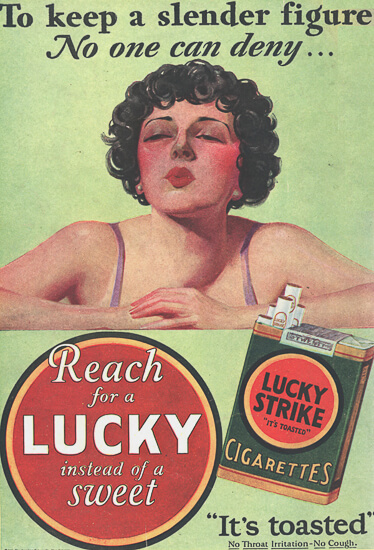 I have always sought to find some common ground with Gini Dietrich.
I have always sought to find some common ground with Gini Dietrich.
I prefer New York, she prefers Chicago.
I prefer the Yankees, she prefers the Cubs.
I prefer spontaneity, she prefers the PESO model.
I prefer Scotch, she prefers wine (but we both prefer them in generous amounts).
Our odd connection began the day I sold the permanent usage rights of my last name to her company.
She thought my last name, next to hers, in black letters applied to frosted glass, would add gravitas to the oak doorway at the front of her office headquarters.
Regardless of our strangest of bonds, I keep in touch with her.
I call her occasionally to monitor the pulse of my one-time passion: Public relations.
Nearly every time I call, she gets around to passionately “monologue-ing” the virtues of this PESO model of hers.
Nearly every time we hang up (do you hang up a cell phone?), I realize public relations has unreservedly passed me by.
I can’t make heads or tails of her philosophy.
Each of our phone calls mimic the plot of No Country for Old Men (minus the violence) and I am the old man.
When we hang up, I usually make my way over to my bookshelf to clutch my father’s leather bound edition of Edward Bernays’ Propaganda.
I understand Bernays.
And I know his work well enough to guarantee he never uttered the words PESO model.
I have always searched for a common interest with Gini.
And then, one scotch-soaked night, I came across a common interest: A potential link between Bernays and Dietrich.
But before I link them, I must differentiate them.
Bernays: The Opposite of Dietrich
Perhaps the opening lines of Bernays’ Propaganda was integral in laying the groundwork for the negative perception of public relations.
To point, the opening lines to Propaganda reads
The conscious and intelligent manipulation of the organized habits and opinions of the masses is an important element in democratic society. Those who manipulate this unseen mechanism of society constitute an invisible government which is the true ruling power of our country.
Could these lines have initiated (consciously or not) Gini Dietrich’s mission:
We are out to fight (and change) the negative perception of the PR industry.
I don’t know.
His Most Famous PR Stunt
Bernays worked on the women’s cigarette smoking campaign in the late 1920s.
In the 1920s, women were prohibited from smoking outside.
If they wanted to smoke, they had to do so in the comfort of their homes.
Lucky Strike, looking to increase its market base, hired Edward Bernays to help.
Lucky Strike wanted to get people to change the perception of women smoking in public.
Psychoanalyst A. A. Brill suggested to Bernays (Bernays was Sigmund Freud’s nephew) that if smoking could be linked to female empowerment (the women’s right to vote recently passed), women may fight against the outdoor smoking taboo.
Bernays convinced a group of former suffragettes to march down Fifth Avenue, smoking Lucky Strikes or what Brill named “Torches of Freedom.”
Marching down the street smoking would symbolize equality to men (who could freely smoke in public).
The media was informed anonymously of the stunt by Bernays and news stories and photos of the women were later published.
That year, cigarette sales tripled.
Bernays had a smashing success on his hands.
Bernays Used the PESO Model without Knowing it
The PESO model: Paid, Earned, Shared, and Owned Media.
If I could apply the PESO model to Bernay’s PR stunt, perhaps I could have something to talk about with Dietrich.
- Paid Media (e.g. Advertisements): Bernays’ first campaign for American tobacco was composed of numerous print advertisements. The content of these advertisements: The advantages of women smoking. The ads declared smoking cigarettes can raise your self-esteem while losing a few pounds while you are at it. There may not have ever been a “Torches of Freedom” advertisement per se, but Bernays was certainly setting a foundation for this “rebellious” type of behavior.
- Earned Media (e.g. Media Relations): Bernays tipped off numerous newspapers to report the story and take photographs of the “Torches of Freedom” march.
- Shared Media (e.g. Co-Branding): Co-branding is a type of shared media, perhaps in this case, it should be termed co-opting. During the 1929 Easter Parade, a young woman named stepped from the crowd and lit a Lucky Strike. Ten women followed her lead, and the “Torches of Freedom” campaign began.
- Owned Media (e.g. User-generated content): Miss Bertha Hunt, who was the first to have light her freedom torch during the parade was quoted as saying, “I hope we have started something and that these torches for freedom… will smash the discriminatory taboo on cigarettes for women and that our sex will go on breaking down all discriminations.”
Now I Am a Believer in the PESO Model
Putting Bernays’s campaign into the context of the PESO model helps me understand what Dietrich has been talking about all this time.
Maybe I ain’t as old as I thought.
After this scotch, perhaps I will call her and let her know her PESO model makes sense.
Then I will inform her that her loveable losers will need another 108 years to win it all again.
image credit: Stanford School of Medicine